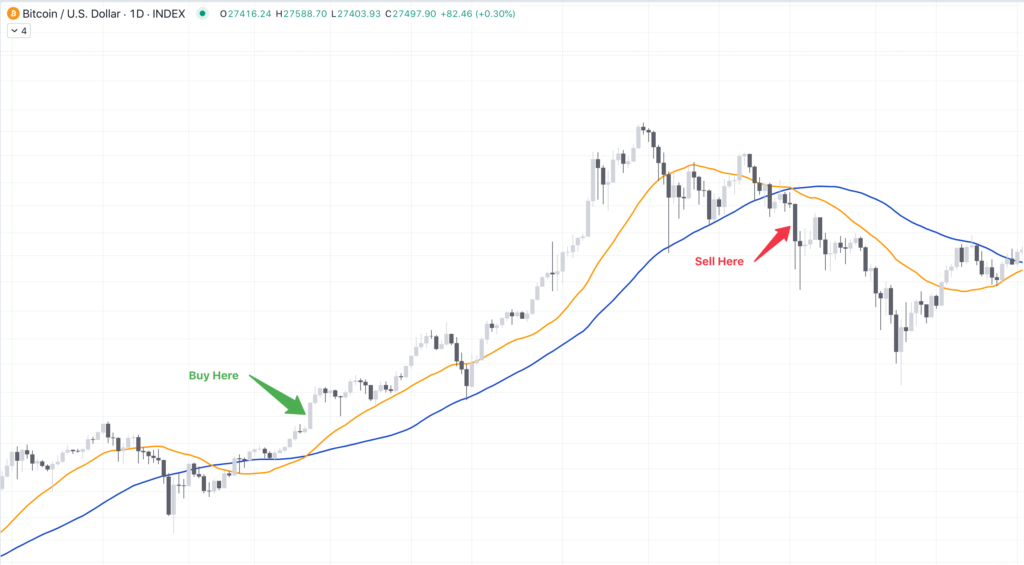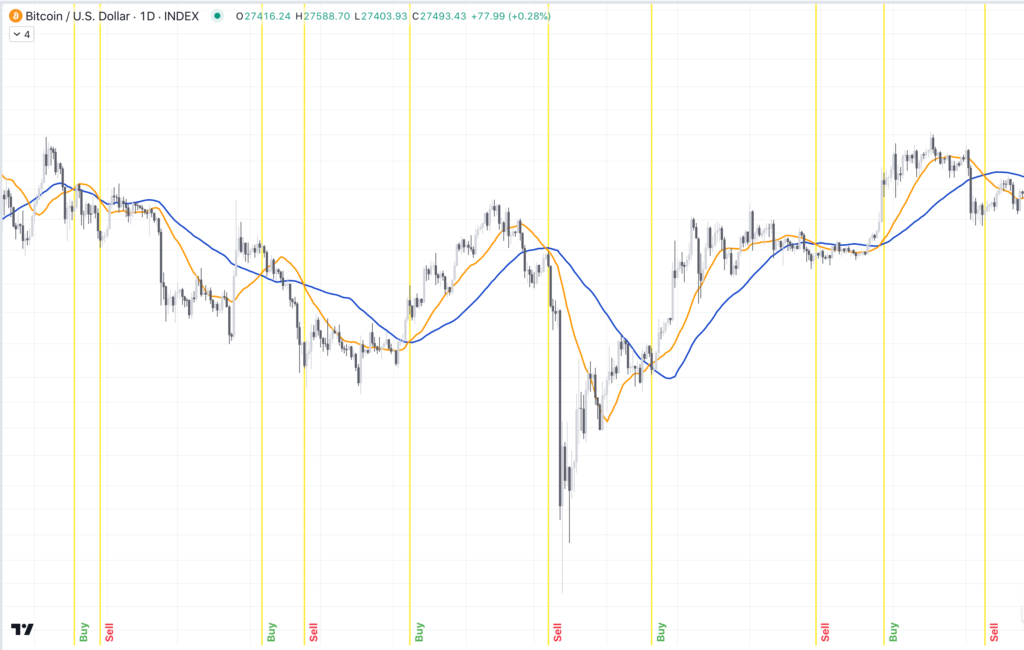I can see the attraction of moving averages for the new trader. I’ve been there, so I get it. Simple rules of 2 moving averages crossing each other that tell you when to buy and sell.

In the examples shown by the clickbait promoters of the moving average they look like the holy grail of a profitable career of trading. Seriously, you should tell your boss to stick it and become a full time trader tomorrow. You now have the inside secret of trading.
But in practice the moving averages will have you buying too late and selling too late as well.
While they are commonly promoted to beginner traders they fail to teach you anything about trading except how to get wrecked. Moving averages don’t even help you learn any important price lessons.
Moving averages just represent an average of previous prices with all the detail stripped out.
I went down the road of trying to implement moving averages into my charts to see if they could be used as a trading signal in some way. And I have to say that this popular indicator is a tragic failure for volatile market conditions, like what we see in crypto.
It actually angers me a little that there are so many self anointed trading gurus out there promoting this trash. What’s worse are the newbie traders willing to defend moving averages as an important indicator for trading. Perhaps they defend moving averages because they have no better system to pin their hopes on. You know. like price itself.
For new traders moving averages are simple to understand and have simple rules. New traders latch onto moving averages because they are probably gratefully to have something, anything that gives guidance on when to trade. But the people that promote there use only seem to show examples where the moving average performs well. Such as trending markets.
What you need to recognise is that moving averages will have you taking trades long after price structures would have signalled a buy or a sell. They lag so badly in volatile markets that you will often miss most of the move before they give you a signal.
Moving average strategies can be useful in slow moving markets where price volatility is low and trending in nature. This is great for traders that want things to be easy over the duration. In these cases the trader would have profiled the volatility of the market and setup the MA to illustrate when the stocks price trend is shifting in performance.
But let’s get something straight. The pro traders that use MA’s to track price action don’t need them to make a trade. They could just as easily turn them off but they would then need to spend a little more time checking their charts. Pro traders tend to adjust the settings of the MA to fit the typical volatility of the price. This will differ depending on what they are trading and conditions.
As for price reacting off of the 21 day moving average. Well that’s not what you think it is. Correlation does not equal causation. Price doesn’t react off a moving average just because it’s a 21 day MA. Thats horse shit. Price is reacting to the variation in its own volatility and the moving averages proximity to that volatility makes the coincidence look prophetic. Price is not looking for a moving average to react upon it.
If you are reading this then you are probably a newer trader who wants to be active in the market and you want to work with more volatility for greater gains. Moving averages are not going to be helpful. You would serve yourself better by focusing your attention on ways to understand behaviour in price action.
When you try to learn how to trade using a moving average you will only learn how to follow a moving average. It doesn’t give you insight into why price crossed an average or why one average crossed another average. ie, 21 day crossing a 50 day average.
If you are following any trader that is trying to tell you that you can become a winning trader by learning to use a moving average, then you should unfollow that person. For the most part, moving averages are just digital crayons on a chart. If you think they work as a trading signal then I have a slow cousin who runs a trading signal service you can subscribe to for just $9.95 a week. Drop me a DM and I’ll send you a link.
So let’s look at a chart with a 21/50 moving average. I have marked out on the price chart where the moving averages would have given a signal to take a trade, according to general advice.

You can see some cases where it might have been profitable but look at the situations where it wasn’t. Also look at how much price moved before you got a trade signal.
Seriously, the moving average will have you trading all over the place and when you see that happening then you will try and game the signals for better performance. At that point you have flipped into full on discretionary trading with no plan at all.
Moving averages are too simple for volatile trades like the ones you see in crypto markets. So do yourself a favour and vow to get rid of them as a trading tool and focus on more effective decision making. When I stated I was quick to implement all the classic indicators that new traders try. Eventually I realised that they were all just a reflection of price behaviour.
I don’t trade with any indicators at all now.